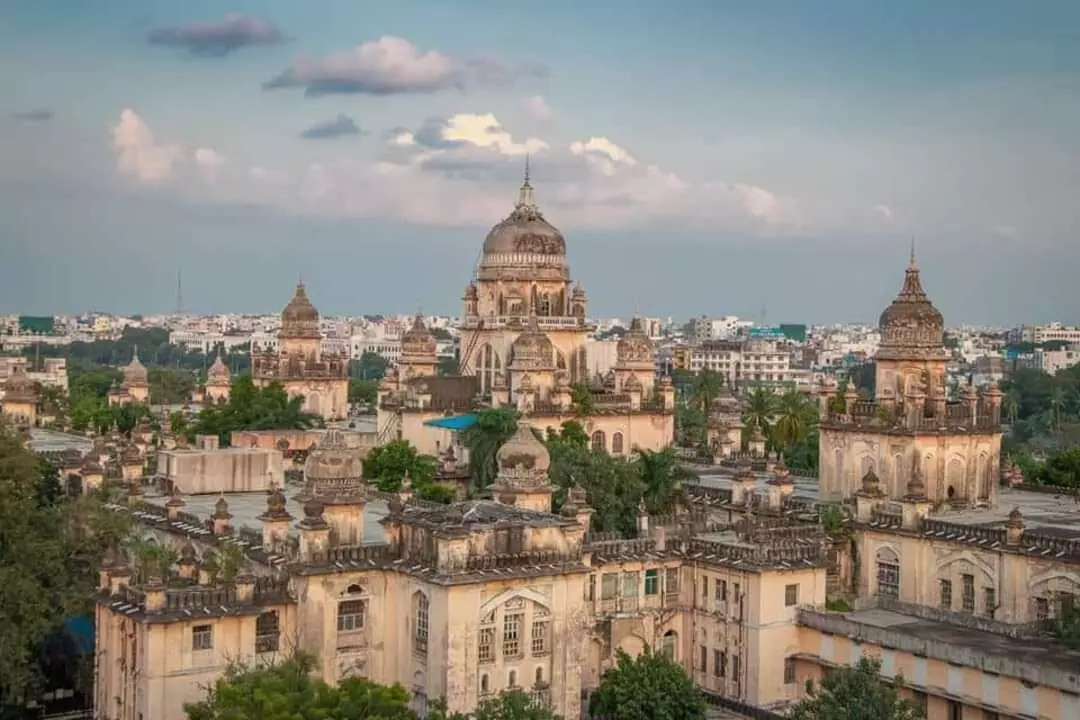Is OGH’s demolition politically motivated? Can two structures co-exist? Hyderabad experts brainstorm
The scales tilted towards conserving the heritage structure while having a new hospital built in the vicinity or within the OGH premises.
By Sulogna Mehta
Hyderabad: With the elections fast approaching, are proposals regarding the demolition of the heritage building of Osmania General Hospital (OGH) and replacing it with a new structure for Old City politically motivated? Are vested interests in politicians and real-estate sharks colluding? Or is it again a political move to demolish structures built by the Asaf Jahi dynasty? Who benefits if the heritage OGH building is demolished?
Several such questions were raised during a recent deliberation on the future of the OGH heritage structure and whether it should be conserved or demolished. The discussion was organised by the Lamakaan cultural centre and Hyderabad Urban Lab at Banjara Hills and speakers included heritage enthusiasts, conservation architects, and doctors among others.
The scales tilted towards conserving the heritage structure while having a new hospital built in the vicinity or within the OGH premises.
It was discussed that due to the Telangana state elections approaching, the politicians might be in a hurry to showcase new healthcare facilities for the Old City in the form of a new OGH building. Constructing new projects also means calling fresh tenders, pumping several hundreds of crores of rupees and benefitting contractors.
Following PPP model
This can also be a tacit move by politicians with vested interest to destroy Nizam era structures. One of the heritage structures Errum Manzil faced a similar controversy earlier when it was set for demolition by the state government. However, Telangana High Court stayed the demolition order. Some attendees observed that while certain buildings like the High Court built during the same time period as the OGH are conserved, why can’t OGH too be restored and renovated for practical purposes?
While the emotional connection to OGH makes the structure integral to the heritage of Hyderabad, the speakers also came up with solutions to the present issues such as the problems being faced by the patients at the OGH.
Heritage enthusiast and a 10th-generation Hyderabadi, Nadir Yar Khan proposed that a public-private partnership (PPP) model can come to the rescue of the century-old building. “Hyderabad Metro, the Quli Qutub Shahi Tombs, and Bansilalpet Stepwell are some successful examples of PPP. It (OGH) can be restored like the Chowmahalla Palace and Falaknuma Palace,” he said.
“Using PPP, OGH can be converted into a museum, a college, a shopping mall, a hospital or any other structure with a contemporary function. The private party and the government can agree on the amount of investment by each party. Later, any given business can be set up on its premises with a 25 to 50 years income concession,” he added.
Replacing a jail with a hospital
While proposing an alternative site for the construction of a new hospital, Khan said that in 2014, chief minister K Chandrashekar Rao had recommended moving the Chanchalguda Jail out of Malakpet and setting up an educational institution in its place. “Similar to how the present Gandhi Hospital came up in place of Secunderabad Jail, we can also have a 4,500-bed hospital in place of Chanchalguda Jail, catering to the population of Old City, which can be around three million. Under the PPP model, we can have around 600 clinics (a clinic per 5,000 people), playgrounds, and schools for adults and children too,” he said.
New hospital inside the old one
Conservation architect GSV Satyanarayana Murthy, who had also drawn up a detailed architectural plan for the redevelopment of the OGH campus, said, “The OGH is a Grade II-B building i.e. it has regional or local architectural, cultural and historical importance. While preserving and renovating it, we can build well-connected new blocks for patient services and multi-level parking within the premises of the present OGH.”
Agreeing with him architect G Srinivasa Murthy said, as per the National Building Code (NBC) of India, hospitals can go up to around 60 metres (approximately 15 floors). “So, we can easily have a new hospital building for patient services in the balance land available within the OGH premises. Instead of diluting the importance of the structure by proposing converting it to a museum, the old building can be preserved for some other medical and diagnostic purposes like X-ray, CT scan, MRI etc because the wall thickness is good enough.”
Stating that service to patients should be a priority, Dr C Sairam, an oncologist at MNJ Institute of Oncology said, “If litigations and long drawn court cases arise regarding the heritage structure, the treatment should continue in the surrounding areas and services should not stop because OGH caters to the poorest of the poor, free of cost for all super specialities. After Harvard, together with the peripheral hospitals under its aegis, it forms the second largest group of hospitals. Patients from several peripheral hospitals including MNJ are referred to OGH. So, the patient navigation protocol should not be disrupted. The court should give its judgment keeping patients’ interests in mind. The court and the conservation architects can take care of restoring and conserving the heritage structure and its safety aspects.”